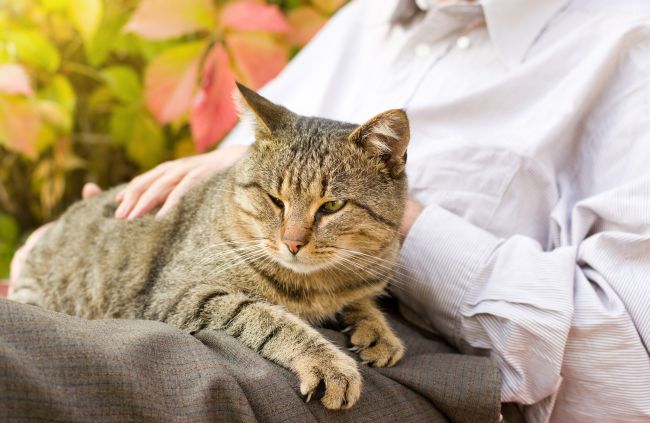
Therapy cats can be powerful conduits of comfort by providing a warm presence to invalids or psychologically distressed individuals. Their consistent demeanor, kneading paws, rhythmic purring can be soothing to people struggling with mental and emotional instabilities. However, cats are not often the first choice for pet therapy animals, since they can be persnickety about how they are touched and handled. Since felines are also more independent, and tend to be less expressive than dogs, there is not as much research about what cat breeds prove to be the best therapy pets.
In spite of this, we can note that a suitable therapy cat must necessarily be affectionate and friendly with humans of all ages. They need to enjoy being handled and held, and ought to exude patience, ease, and gentleness in all circumstances. Therapy cats must be willing to have strangers handle, pet, and even hug them without retaliating or resisting.
Best Cats Breeds For Therapy Pets
Though personalities range breed to breed, the temperaments of these cats seem to best reflect with the elements required in therapy pets:
- Mixed breeds: Oftentimes, purebred cats can tend to be higher-strung than mixed-breeds. Feline “mutts” are less finicky, and generally represent over 50% of the cats certified as therapy pets. Mixed breeds tend to be affectionate, docile, and low-maintenance which are superior qualities for pets working with elderly people struggling with dementia or Alzheimer’s disease, or children who have social fears, speech impediments and challenges expressing themselves. Many doctors have reported significant improvements in communication from patients who spend time playing with, holding, and interacting with mixed-breed therapy cats.
- Ragdolls: These felines are the epitome of snuggly affection-lovers. Accurately named, Ragdolls go limp whenever they are picked up, and are content to rest quietly on their human’s lap. Whether they are surrounded by several children or groups of people, this breed tends to be a calm, quieter cat than most, making them well-suited to attend therapy patients.
- Abyssinians: This socialite loves to be in the center of what is going on. They are intelligent, outgoing, and are very interactive with people. Abyssinians’ ease and curiosity with strangers makes them adaptable therapy pets, and amusing house mates. Though these felines enjoy affection, prospective patients should be aware that they usually are less lap-happy than some of the more cuddly breeds.
- Persians & Exotic Shorthairs: Both of these breeds adore human attention. Exotic Shorthairs tend to be quieter and gentler than their Persian cousins, but both breeds will happily environ themselves by their owners as frequently as possible. They are steady therapy pets since not much seems to alarm these loyal kitties.
- Sphynx: This hairless breed has an inquisitive nature that causes them to be very engaging pets. Because of their low body temperature, they like to be held close, and are known to follow their pet owners as loyally as a dog from room to room. People that want to feel loved and needed by their pet often find just what they are looking for in the sleek Sphynx.
- American Shorthair: This cat breed has one of the most balanced temperaments around. They are good-natured, consistent, and are typically patient with children. They can be very attached to their owners, and will provide a consistent and nurturing presence.
If you are not much for a cat person, pet therapy isn’t just limited to domestic felines! The most popular forms of Animal Assisted Therapy (ATT) are canine therapy, dolphin, and equine therapy. Patients who either work with horses (this is called Equine Assisted Psychotherapy, or EAP) and ride horses (through the Profession Association of Therapeutic Horsemanship International), receive ample emotional and physical health, and often require lower dosages of medication once the therapy begins. Though dolphin therapy has been challenged as ineffective in regard to long-term changes, many doctors and psychiatrists notable enormous growth with patience who work with the amiable sea creatures. Behaviorist and therapist have also found it helpful for patients to work with other animals such as rabbits, birds, hamsters, or even fish.

